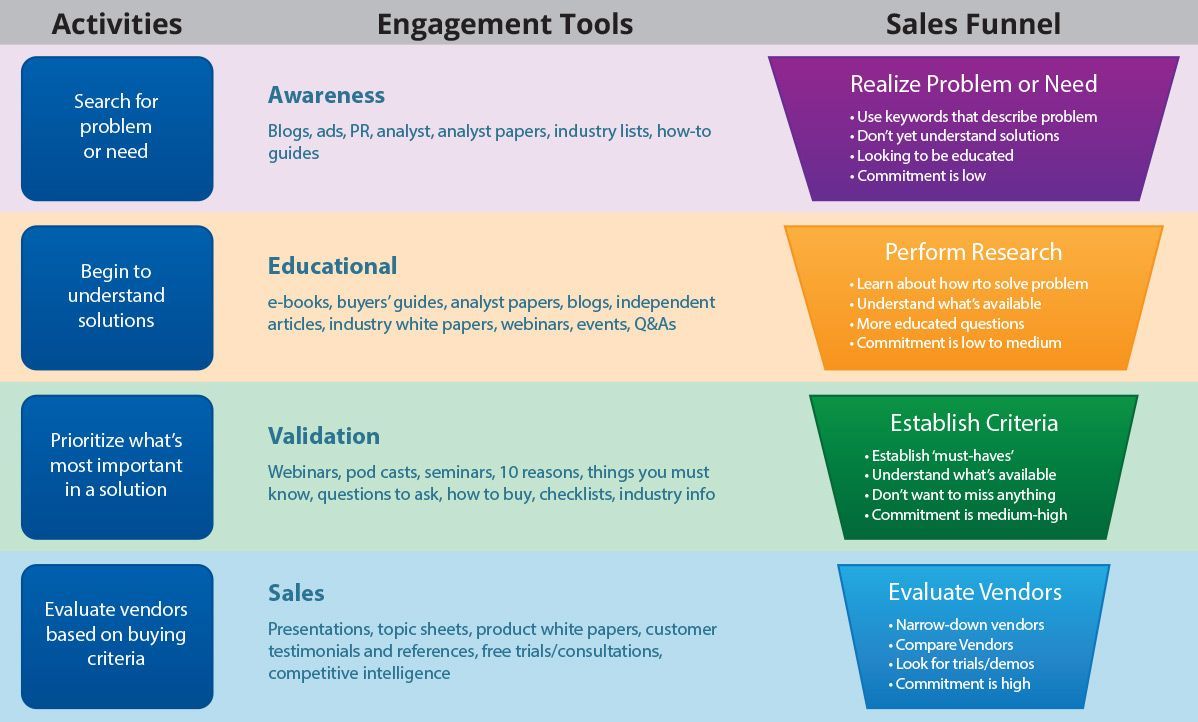If you're reading this, you probably understand that great quality content is now an extremely important part of any marketing strategy. However, simply writing content to have content is not the smartest strategy.
There is a "rhyme and reason" to what topics to write about. In this blog, we will take a look at what factors you need to consider when developing your content strategy to help drive lead conversion.
Generally speaking there are two different criteria that you should use to classify your content.
- First by buyer personas
- Then by the stage of the buying process that persona is in
Buyer Personas
A persona is a fictional representation of your ideal client. You create different personas by grouping customers by common characteristics, needs or wants.
For example, imagine you operate in two different industries each of which use your products or services for completely different reasons and have different questions, needs and problems to solve. In this case, it would probably makes sense to create two different personas, one for each industry.
Customer Buying Cycle
No matter what you are selling, during the buying process an individual will travel through different stages. Each stage they are looking to answer different questions and are seeking different information.

Awareness
In this stage the individual is simply looking for very high level information. The information should be geared towards educating them on specific one point or common question while at the same time sparking their curiosity to learn more.
At this stage the lead is not in "buying mode" which means your content should be 100% purely educational and free of sales and promotional information. Your goal should be to engage the user and start developing a relationship.
These typically are un-gated, free to download content that's focused on driving visitors to your website. This will help set up the conversion that happens in the next stage.
Educational
So we've attracted them to your website in the awareness stage by offering content that perks their curiosity. For those who are interested in learning more, this is when they enter the educational stage and really start hunting for educational information about the industry, different solutions available and to gain a general understanding of the space.
After they learn about the common problems and industry solutions available, they will start evaluating if they have a problem/need/want that needs to be solved.
Again, this should all be purely educational information with little to no sales or promotional information. At this point they are still simply looking for great information and are not close to making a purchase decision.
Validation
In this stage, the buyer and made the decision that they indeed have a problem and are now looking for all the different solutions available. They are also trying learn which criteria they should be using to evaluate those various solutions.
This content should be focused around educating the reader what they need to look for when developing buying criteria. It should help give them a path to follow when looking at different products, services or vendors.
It can be tricky, however, you want to try and create content that is unbiased and based on facts. Keep the "meat" of the content purely educational with little to no sales, however, at this point it will make sense to have a bottom funnel offer at the end of the educational content.
Sales
At this point the lead knows they have a problem and knows what to look for in a product or solution. Here they have narrowed their choices down to typical 2-3 different vendors and are looking to take the next step to get in touch to learn more.
This is typically where most businesses start their sales funnel, using bottom funnel conversion offers such as "Free Consultations", "Free Demos" or "Trials Offers". It could also be for content like Case Studies, which typically interest those who are towards the bottom of the funnel and are evaluating vendors.
If done properly, by the time a lead gets to the sales stage, they should already have a great deal of trust built up towards your company because of all the great information you've sent over time. They already have a bit of a relationship built and see you as an industry thought leader.
When it comes to planning your content strategy around content that converts leads, you will create a chart that outlines the different personas and the different stages of the buying cycle as described above.
Then you will put yourself in the shoes of that persona at that stage and ask yourself what types of content would be most relevant and really interest a lead at that point. The more "on-point" the content is with what's going on in the mind of the individual, the higher your conversion rate will be.
It's important to get other in your organization involved in content brainstorming process. Many times those who are on the "front lines" such as sales or customer service teams have the best insight into what information each persona wants at each stage.
Lastly, it's important to note that you should monitor the success of different topics and content over time to help validate your hypothesis on what content would be relevant. You should be constantly iterating the content you're producing at each stage based on what's performing and what's not performing.
